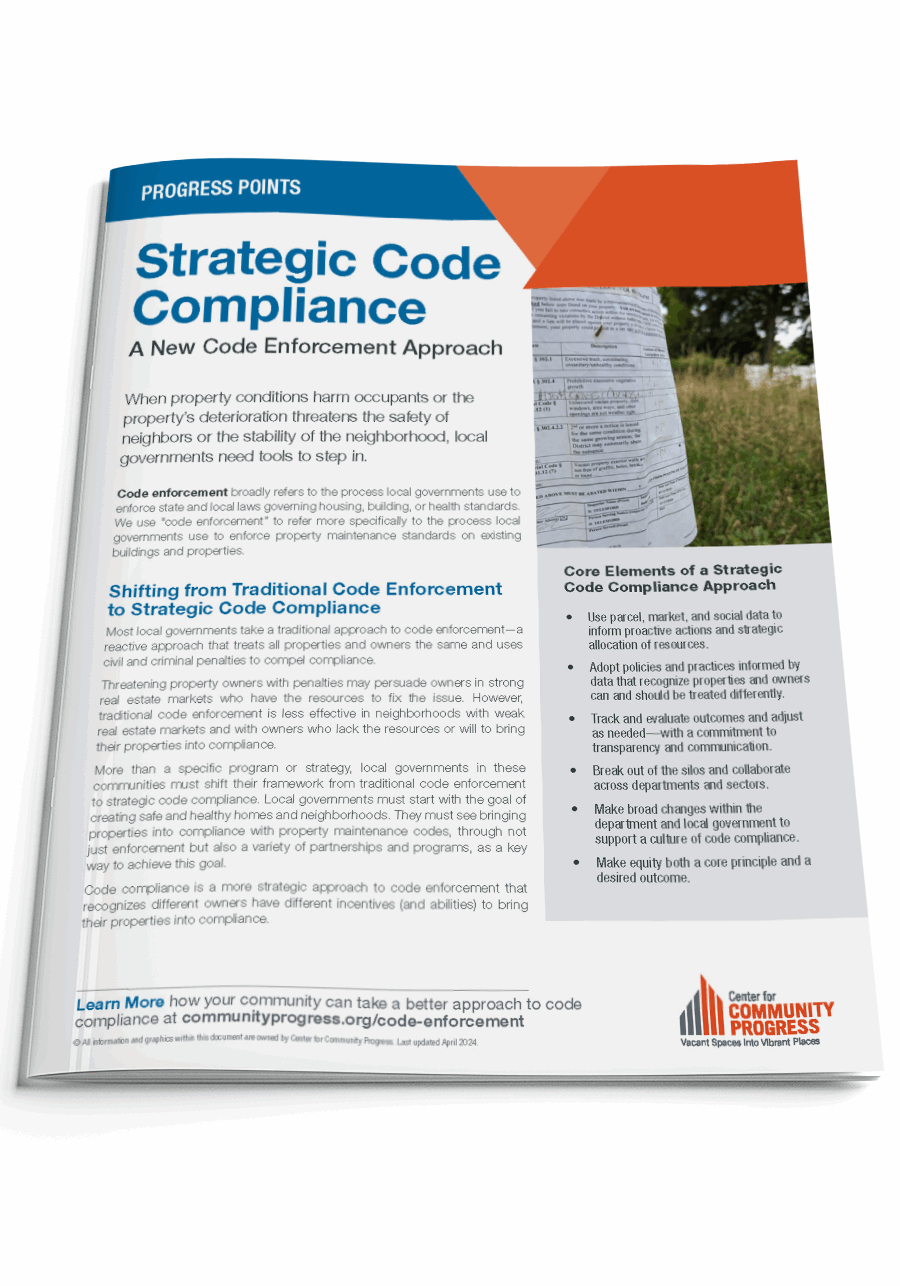Progress Points: Strategic Code Compliance
A Brief Primer
Topic(s): Code Enforcement System
Published: April 2024
Geography: United States
Author(s): Center for Community Progress
When property conditions harm occupants or the property’s deterioration threatens the safety of neighbors or the stability of the neighborhood, local governments need tools to step in.
“Code enforcement” broadly refers to the process local governments use to enforce state and local laws governing housing, building, or health standards. We use “code enforcement” to refer more specifically to the process local governments use to enforce property maintenance standards on existing buildings and properties.
Shifting from Traditional Code Enforcement to Strategic Code Compliance
Most local governments take a traditional approach to code enforcement—a reactive approach that treats all properties and owners the same and uses civil and criminal penalties to compel compliance.
Threatening property owners with penalties may persuade owners in strong real estate markets who have the resources to fix the issue. However, traditional code enforcement is less effective in neighborhoods with weak real estate markets and with owners who lack the resources or will to bring their properties into compliance.
More than a specific program or strategy, local governments in these communities must shift their framework from traditional code enforcement to strategic code compliance. Local governments must start with the goal of creating safe and healthy homes and neighborhoods. They must see bringing properties into compliance with property maintenance codes, through not just enforcement but also a variety of partnerships and programs, as a key way to achieve this goal.
Code compliance is a more strategic approach to code enforcement that recognizes different owners have different incentives (and abilities) to bring their properties into compliance. The following are the core elements of a strategic code compliance approach:
- Use parcel, market, and social data to inform proactive actions and strategic allocation of resources.
- Adopt policies and practices informed by data that recognize properties and owners can and should be treated differently.
- Track and evaluate outcomes and adjust as needed—with a commitment to transparency and communication.
- Break out of the silos and collaborate across departments and sectors.
- Make broad changes within the department and local government to support a culture of code compliance.
- Make equity both a core principle and a desired outcome.
Implementing Strategic Code Compliance on Different Properties
Our 2024 publication Reevaluating Code Enforcement: A New Approach to Addressing Problem Properties describes key recommendations for local governments to consider when approaching strategic code compliance on three common property types:
For vacant and abandoned properties, use the “Fix it Up, Pay it Up, Give it Up” approach. 1) Give the owner a chance to fix property conditions or the local government will step in, 2) If the local government fixes the issue, make the owner pay back the public cost, and 3) If the owner doesn’t fix or pay, transfer the property to a new, responsible owner.
For rental housing, create a proactive rental inspection and licensing program, making sure you have a just, well-resourced program in place to provide resources that prevent tenant displacement and retaliation.
For owner-occupied properties, create “equitable offramps”—programs, resources, and partnerships to help low-income homeowners bring their properties into compliance and avoid costly citations, fines, and court actions.
Shifting to strategic code compliance is not easy, but the effort is worthwhile and necessary. Implementing a strategic code compliance framework is key to achieving the goal of code enforcement: healthier and safer housing and neighborhoods where all residents can thrive.

Topic(s): Code Enforcement System
Published: April 2024
Geography: United States
Related Publications
Other Related Content
Subscribe to join 14,000 community development leaders getting the latest resources from top experts on vacant property revitalization.
